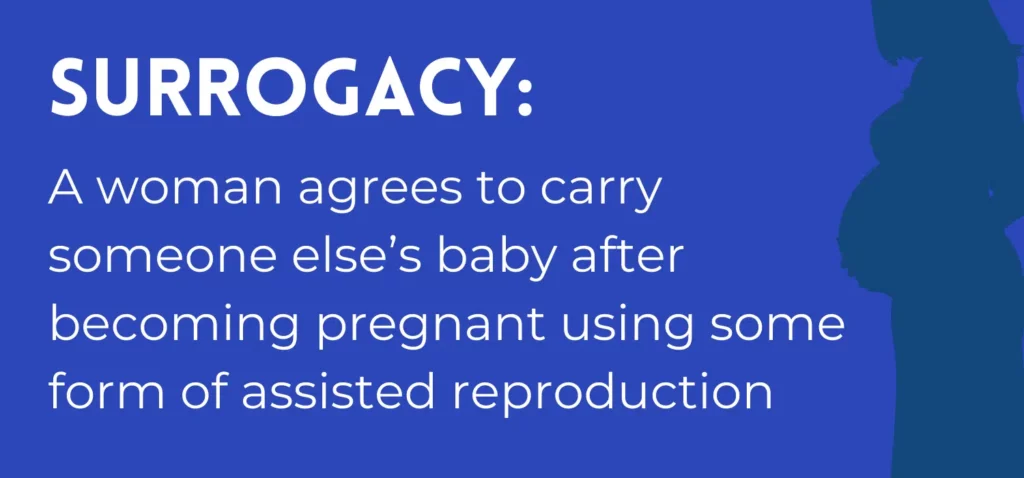What is Transnational Surrogacy?
Transnational Surrogacy can also be referred to as international surrogacy. It is a surrogacy arrangement where a surrogate mother is living in a different country from the intended parents. The surrogate is also usually referred to as the gestational carrier because she is the one carrying the pregnancy. The popular destinations for commercial surrogacy included the United States, Ukraine, Nepal, Mexico, Georgia, Poland etc. The cost also varies in different countries due to their level of development and the cost of living.
In countries like the U.S., the cost varies from 100,000 dollars to as low as 30,000-50,000 in other places like Cambodia and Cyprus. The payment that is usually received is much less than the total amount of the surrogacy, but for many of the women, it is quite a rational decision. This is because they can make the equivalent of several years’ worth of salary in just nine months. The process is not risk-free, but the alternatives that they face are also sometimes riskier.
The laws that guide surrogacy differ from country to country, and even within the countries, there are regional variations and rapid policy changes. There are also recent changes in the laws in some of these countries like Georgia. Transnational surrogacy is made possible by medical travel health agencies that offer these surrogacy services as a form of overseas medical treatment to intended parents. This is usually regarded as a form of medical or health tourism by the countries that accept them.

Are there any ethical challenges in transnational surrogacy?
There are important considerations from an ethical point of view that should be taken into account. The question of how free the surrogate is to make their choice, if there is any exploitation in the relationship between the surrogate and the intended parents and how to minimize or avoid the risk of these occurrences are important subjects to consider.
What about the safety?
There are some issues about safety for the gestational carrier which would need to be addressed. In particular, there may be issues with some of the policies of the fertility clinics for the surrogate. For example, some clinics require that the surrogate go through cesarean sections as the delivery method. Also, another issue is the practice of multiple embryo transfer, which may lead to the implantation of more than one embryo into the uterus of the surrogate. This is usually associated with a higher risk of complications and is widely discouraged in regulated fertility clinics.
Policies of the surrogacy clinics

There are also some issues with the policies that some of these surrogacy clinics have about transnational surrogacy. One of these issues is the limiting of the contact between the surrogate and the newborn after birth, which they believe will help the surrogate not develop emotional ties with the baby. Despite this, many surrogates say that they feel very connected to the baby they have carried and would appreciate the possibility of staying involved in the child’s future life. There is also the issue of money, how much is transferred and to whom; what is the amount that will be taken by the middlemen, over how many weeks or months is it paid out, if it is inflation adjusted and so on.
What are some of the things that should be agreed on in transnational surrogacy?
Once the international intended parent has been matched with a surrogate, it will be beneficial if the details of the surrogacy are agreed on. Some of the following topics are of the utmost importance to be discussed and agreed on as they may impact surrogacy throughout the journey. They include:
Embryo transfer
Sometimes an IVF doctor may recommend multiple embryos to be transferred at once. The risk is increased as well as the chances of getting pregnant. This practice is frowned upon in regulated clinics, but all parties must agree on the number of embryos that should be transferred.
Genetic disability termination
The ability to terminate a pregnancy with a fetus that has a genetic disability has been made possible with advancements in reproductive technologies. This issue will arise in the course of the pregnancy if a genetic problem is found. This topic will be discussed and agreed on before the surrogacy contract is signed.
Selective reduction
Carrying multiple fetuses can pose a risk of increasing complications during the pregnancy. This can be dangerous both for the surrogate and the other fetuses. Sometimes, a selective reduction is advised to increase the chances of a successful birth. The surrogate and the intended parents will need to agree on this topic as well in the surrogacy agreements
Delivery presence
Since the intended parents are in a different country, this is another sensitive but vital decision to make. A natural delivery will allow for the presence of more than one person during the delivery, but a cesarean will not. A cesarean will only allow for one person at the delivery and it is usually the surrogate’s partner that will be there. If the surrogate doesn’t have one, the intended parent that will be present will have to be previously agreed upon.
Breast milk
After the delivery of the baby, the surrogacy arrangement is essentially over. If the intended parents wish for their child to take breast milk, their surrogate may be kind enough to be willing to pump her breast milk and deliver it to them provided that there is an arrangement to that effect. Shipping of breast milk to another country is also possible, but this will have to be arranged for by the intended parents as well as with the cooperation of the surrogate to make that possible.
Relationship
When it comes to post-surrogacy relationships, opinions may differ. It is crucial to properly discuss the kind of relationship that best meets everyone’s needs and lifestyle. There are no set answers. While some intended parents and surrogates may choose to maintain a close relationship, others are usually content with the occasional email updates and photos of the child.
These topics are some of the crucial issues around transnational surrogacy that would need to be ironed out in the time that the surrogacy relationship between the surrogate and the intended parents is being initiated. The journey will have more chances of success and an amicable resolution if sensitive topics are brought up and thrashed in the initial stages of the surrogacy process.
The information provided in this blog is for educational purposes only and should not be considered as medical advice. It is not intended to replace professional medical consultation, diagnosis, or treatment. Always consult with a qualified healthcare provider before making any decisions regarding your health. Read more







